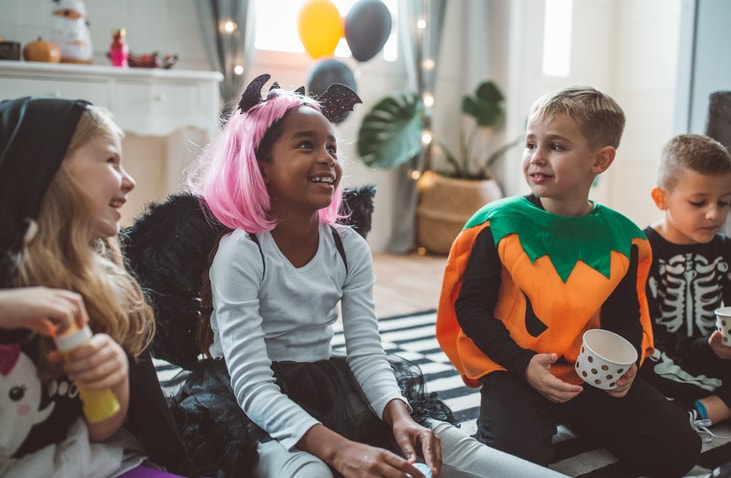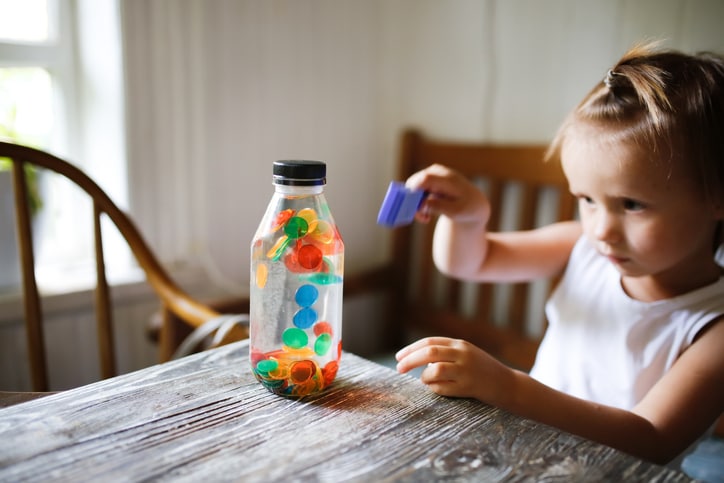Halloween in the U.S. means one very serious and spooky thing for most kids: a sugar-filled night of costumed trick-or-treating. But, the holiday is actually much more nuanced, and has quite a history behind it that predates our current door-to-door tradition.
It’s a great time of year to throw some secret history lessons into the season, as kids are naturally curious little creatures. Using these fun facts about Halloween, you can fill them in on the little known tradition called Beggars’ Night and teach them about varying Halloween traditions around the world. Here’s what kids will love to know about Halloween.
Fascinating and fun facts about Halloween
1. Halloween can be traced to ancient times
The Irish are likely responsible for bringing Halloween to the U.S. The true origins of the holiday remain murky, but traces can be identified in ancient Celtic festivals, early Roman Catholic holidays, medieval practices and even in British politics, History.com reports.
Halloween is likely tied to an ancient pagan festival called Samhain (pronounced “sow-win”). The Celts held the festival beginning on October 31 to usher in “the dark half of the year.” They believed that the spiritual and physical world collided on that night, allowing more interaction between humans and inhabitants of the “other” world.
People wore costumes to scare away evil spirits that were said to roam the earth on the day. During the medieval times in Scotland and Ireland, this costume tradition was known as “guising.”
2. People didn’t always trick-or-treat for candy
During World War II, when sugar rationing was taking place in the United States, trick-or-treating for candy wasn’t popular. Instead, people gave what they could, including fruit, nuts and small toys. Candy became popular again after the war, when magazine ads started promoting candy brands to housewives in the 1950s and beyond. They appealed to people’s desire to not have to make handmade items, like doughnuts and popcorn balls.
3. October 31 isn’t the only day people celebrate Halloween
Some cities in Iowa, Missouri and Ohio hold Beggars’ Night as an alternative to trick-or-treating. Originating in the late 1930s, Beggars’ Night was established to help keep kids safe from vandalism and other unsavory activities that had become prolific on Halloween night. On Beggars’ Night, which takes place October 30, trick-or-treaters must tell a joke to get something sweet.
Some Pennsylvania and New Jersey residents also have a tradition that seems nearly opposite to Beggars’ Night, as the night before Halloween is unofficially known as Mischief Night. On this night, according to tradition, people are encouraged to toilet paper houses, throw eggs and smash pumpkins. Some places have even instituted curfews to stop the mayhem. Clearly, these “pranksters” haven’t ever had to clean dissolved toilet paper off of their trees and bushes before. But hey, it’s part of the fun?
4. Halloween isn’t the only fall celebration
Other countries also celebrate Halloween, and they have their own traditions as well. In some countries, Halloween unofficially serves as a precursor to other culturally significant celebrations and holidays.
In parts of Mexico, Dia de los Muertos begins on November 1. People wear intricate skull masks and prepare an altar with their deceased loved ones’ favorite foods. In Italy, people celebrate the religious holiday Ognissanti, or the “all saints” festival, on November 1. Some make lanterns out of pumpkins, and in some parts of Italy, the dead “rise” to give kids holiday gifts. In Guatemala, early November marks the Barriletes Gigantes, or “giant kites” festival, during which people fly colorful, hand-painted kites to honor deceased loved ones.
However you celebrate, costumed fun and a bit of sugar are often part of the festivities.
5. Jack-o’-lanterns weren’t always made out of pumpkins
Jack-o’-lanterns came to the U.S. through Irish immigrants, in the telling of the story of Stingy Jack. As the story goes, Stingy Jack was a shady character who played tricks on the devil to keep his soul from being claimed. He convinced the devil to turn himself into a coin and even trapped the devil up a tree, each time agreeing to set the devil free only if the devil promised not to claim his soul for a certain number of years.
When Jack finally passed away, neither the devil nor God wanted him, so the legend says that he now roams the Earth as a spirit or ghostly figure with a lantern to light his way — the jack o’-lantern.
People started making their own jack-o’-lanterns to frighten Stingy Jack away as he roamed by their houses. Originally, jack-o’-lanterns would have been carved out of potatoes, turnips and beets, but when immigrants came to America, pumpkins were more fruitful, so they became part of the tradition.
6. Candy Corn is more than 100 years old
Candy corn was first invented in the 1800s by George Renninger. Its three-color appearance was cutting-edge at the time because it required quite a bit of labor and innovation without the machines we have doing the work for us today. Now, candy corn is one of the most loved (and sometimes hated) candies that show up this time of year. It makes its way into Halloween parties and into all sorts of spooky treats as well.
7. Bobbing for apples used to be a romantic gesture
Bobbing for apples became associated with Halloween due to Halloween parties and the end of the growing season, but it originated in Europe as a courting ritual to determine if a couple was true soulmates. Girls would bob for an apple and try to bite into the one that belonged to their crush, according to Reader’s Digest. If a girl was able to successfully get the correct apple on her first try, that meant they were destined to be together. Sounds a lot more straightforward than a dating app.
More kid friendly facts about Halloween
- There’s a full moon on Halloween every 19 years, according to NASA.
- Americans spend more than $12 billion on Halloween, the National Retail Federation reports.
- Illinois produces the most pumpkins in the U.S. according to the USDA.
- Fifty-one percent of Americans believe you should eat candy corn whole.
- Stephen Clarke holds the Guinness Book of World Records for fastest pumpkin carving. In 2013, he carved a pumpkin in 16.47 seconds.
- Reese’s cups are the top Halloween candy in the U.S.
- This year’s most popular costumes will include Taylor Swift and Deadpool.
- Keene, New Hampshire, holds the record for most jack-o’-lanterns lit. In 2013, they had 30,851 lit and have broken their own record eight times.
- The heaviest jack-o’-lantern on record was 2,749 pounds.
- Pumpkins are actually considered a fruit, not a vegetable. If you haven’t tried toasting those pumpkin seeds, give it a whirl this year.
- Silly string is banned in Hollywood on Halloween — watch out for that $1,000 fine ruining your fun.
- There’s a real city in South Carolina named Halloween.
- The biggest Halloween parade in the U.S. is held every year in New York City.
- In Ireland, there’s a traditional bread eaten around Halloween called barmbrack. You can make your own using this recipe.
The bottom line
In the end, Halloween is a time when kids and adults alike get to channel that spooky energy we carry within us into a fun, creative and festive holiday. It’s when scary masks are suddenly acceptable, as is banging on the neighbor’s door (politely) demanding candy. It’s also a time filled with traditions, history and culture. Happy Halloween, and stay safe at those Halloween parties!




